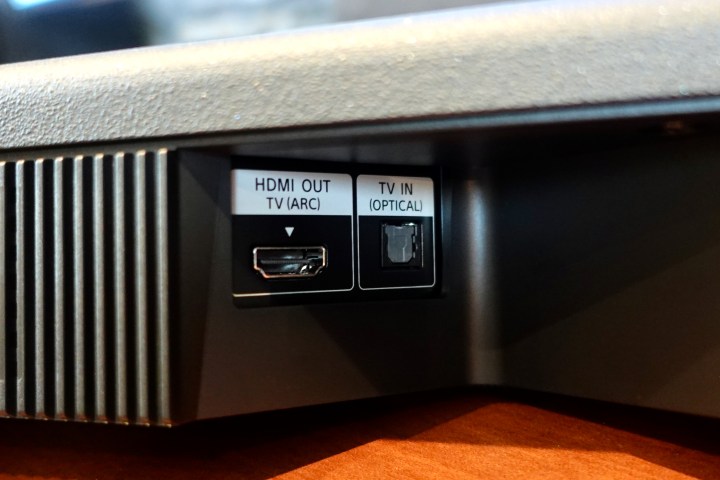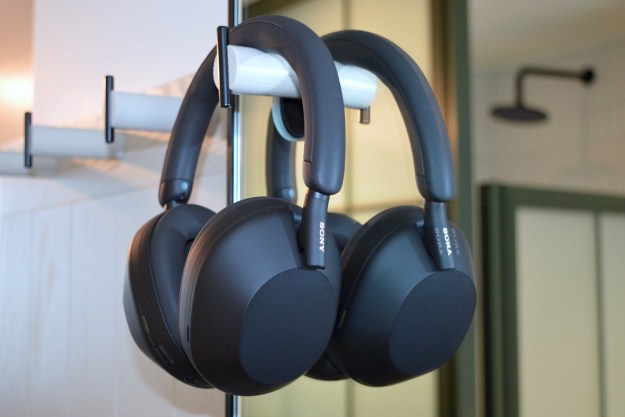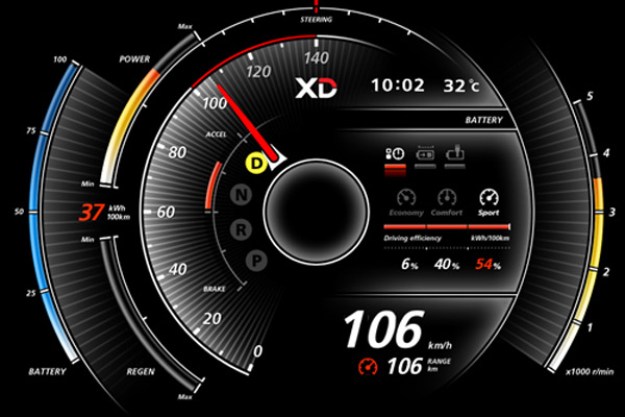With its object-based sound system, Dolby Atmos is the most immersive version of surround sound you can get at home. Though it took some time to catch on, the format is now supported by Ultra HD Blu-ray discs and streaming services like Netflix, Amazon Prime Video, Apple TV+, and Disney+. So, if you’ve got Dolby Atmos speakers, a Dolby Atmos-compatible AV receiver or soundbar, and access to Dolby Atmos content, you should be hearing Dolby Atmos sound, right?
Well, as it turns out, no, not necessarily. To understand if your Atmos system is delivering true Atmos sound — and not just really good surround sound — you need to understand how Dolby Atmos works with all of your media sources and components. It’s a bit technical, but we’re going to make it as simple as possible.
What exactly is Dolby Atmos?

Dolby Atmos isn’t actually a soundtrack at all. It’s metadata that is used by compatible audio gear to control which speakers are reproducing certain sounds. A good example is when a helicopter flies overhead in a movie. Without Atmos information, the sound of the helicopter is embedded in one, or many, of the surround sound channels. But so are all of the other sounds you’re hearing.
With Dolby Atmos, the helicopter is treated as its own discrete object, and a Dolby Atmos receiver can use that information to separate the helicopter sound from the background sounds and move it independently from one speaker to another. The result is a very convincing 3D placement of sounds for a much more immersive movie experience.
And what about Dolby Atmos Music?
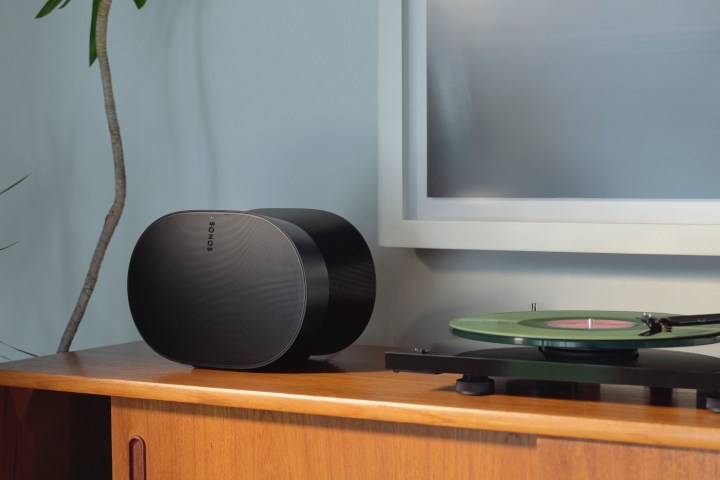
Dolby Atmos Music does for music what Dolby Atmos does for movies and there are now plenty of ways to experience it, from Dolby Atmos-capable soundbars and speakers, like the Sonos Arc and Sonos Era 300, to the wired and wireless headphones you use with your smartphone. It’s impressive when you hear it, but it has different requirements than Dolby Atmos for movies and TV shows, so check out our full Dolby Atmos Music explainer to see if your current gear supports it.
So if Dolby Atmos is just metadata, what am I listening to?
As we said, Dolby Atmos isn’t sound, it’s information about sound. That information piggybacks on top of existing surround sound signals. At the moment, Dolby Atmos can only do this with two types of surround sound signals:
- Dolby TrueHD
- Dolby Digital Plus
Dolby TrueHD is a lossless, very high-bandwidth format that is currently only available on Blu-ray and UHD Blu-ray discs. It’s transmitted over an HDMI cable, from a Blu-ray player to an AV receiver, TV, or a soundbar that can pass through the video portion of the signal to your TV. Atmos via TrueHD is also supported by some media player apps, like Plex, that run on the Nvidia Shield TV family of streaming devices.
The combination of Dolby Atmos and Dolby TrueHD is the best possible surround sound you can get at home.
More on Dolby Atmos
- How to install Dolby Atmos ceiling speakers
- The best Dolby Atmos movies, from Ready Player One to the new Jumanji movie
- How do you re-create the air-ripping launch of 11,000-hp dragsters? Dolby Atmos
Dolby Digital Plus is a lossy, lower-bandwidth format that has been optimized for use with streaming services and features like B-D Live. It’s currently supported by a wide range of devices, including laptops, tablets, smartphones, and streaming boxes like Apple TV and Roku. Dolby Atmos over Dolby Digital Plus will be the way most people experience Atmos.
Not only is it the format used by Netflix, Amazon, and other streaming services, but it’s also the only version of Atmos that is compatible with HDMI ARC (as opposed to HDMI eARC — more on this later).
Files, apps, and hardware
The tricky thing about Dolby Atmos is that, for it to work, every ingredient in your home theater setup has to support Atmos. In other words:
- The movie you’re playing — whether it’s physical, downloaded, or streamed — has to be encoded with Dolby Atmos (via Dolby TrueHD or Dolby Digital Plus).
- The hardware you’re playing it on has to be able to decode Dolby Atmos or pass it along to a Dolby Atmos-capable sound system without altering it. This is known as “passthrough.”
- The app you’re using — e.g. Plex, Netflix, iTunes, Amazon Prime Video, etc. — must be capable of delivering Dolby Atmos data to your playback device.
- And, of course, your TV, AV receiver, or soundbar must be Dolby Atmos compatible, if that’s the device you’re using to listen to audio.
Another potential gotcha: Just because your app of choice supports Dolby Atmos on device X, that doesn’t mean it necessarily supports it on device Y. For instance, Plex running on an Nvidia Shield TV can passthrough Atmos over Dolby TrueHD, and over Dolby Digital Plus, but Plex on an Apple TV 4K will only handle Atmos over Dolby Digital Plus, and Plex on a 4th-gen Apple TV can’t passthrough Dolby Atmos at all.

If you’re playing an Atmos-encoded Ultra HD Blu-ray on an Ultra HD Blu-ray player that’s connected to an Atmos-capable TV, soundbar, or AV receiver via HDMI, we can pretty much guarantee you’re getting the full Dolby Atmos experience. We can’t say the same about some other device combinations.
Here are a few examples where you will not get Dolby Atmos sound:
- Playing an Atmos-encoded Netflix movie on an Apple TV HD (4th gen, non-4K) connected to an Atmos-capable AV receiver. In this scenario, the Apple TV is the weakest link: It doesn’t support Dolby Atmos. You’ll be limited to 5.1 Dolby Digital Plus surround sound.
- Playing any Dolby Atmos-encoded content on a Roku Streaming Stick+ that’s attached to a Dolby Atmos capable TV, with an Atmos soundbar connected via optical cable. The obstacle here is the optical connection to the soundbar. You’ve got Atmos content on a device that can support Atmos, on a TV that can passthrough Atmos, but because you’re using an optical cable instead of HDMI ARC/eARC, the TV has to down-convert the audio to Dolby Digital 5.1 (otherwise known as EAC), because optical connections cannot cope with the higher bandwidth requirements of Dolby Digital Plus.
- Using the built-in Plex client on an LG OLED TV to play a movie encoded with Dolby TrueHD and Dolby Atmos, with an Atmos soundbar connected via HDMI ARC. This is a really frustrating one — all of the sources and components are Atmos-capable, but because the Plex client on the LG TV isn’t yet optimized to handle TrueHD/Atmos, it down-converts the audio to Dolby 5.1 — even though both the TV itself and the connected soundbar could have easily handled the TrueHD/Atmos track.
HDMI-only?
Unless you are satisfied with your TV’s internal speakers, HDMI ARC or eARC is a requirement for Dolby Atmos. Whether your Dolby Atmos content is coming from a Blu-ray disc, a streaming box, or even a built-in app on your TV, the only way to get that signal to your AV receiver or soundbar is via HDMI. Both Dolby TrueHD and Dolby Digital Plus contain more data than a digital optical connection can handle.
If you want to transmit Dolby Atmos from your TV to your AV receiver or soundbar, your TV must be equipped with at least HDMI ARC. As we mentioned above, HDMI ARC works with Dolby Atmos/Dolby Digital Plus, but if your TV is equipped with the newer HDMI eARC standard, it will also work with Dolby Atmos/Dolby TrueHD. There aren’t many Dolby Atmos/Dolby TrueHD sources yet, but you’ll be ready as they become available.
One thing to keep in mind if you’re using your TV between your streaming media device and your soundbar or AV receiver is that not all TVs are equally adept at passing through Dolby Atmos content. For instance, the Apple TV 4K outputs a version of Dolby Atmos that, in its native format, is incompatible with HDMI ARC. Some TVs can transcode that Atmos signal into one that is compatible with HDMI ARC, while others can’t. If you have a TV that can’t do it, you may have trouble getting Atmos from the Apple TV 4K to your soundbar or AVR. TVs equipped with HDMI eARC, however, should have no trouble passing along that Atmos signal to connected equipment.
If this is your situation — and if your Atmos-capable soundbar has an HDMI input — one workaround is to connect the Apple TV 4K to the soundbar (which will have no trouble with the Atmos signal) and let the soundbar pass through the video portion of the signal to your TV. Check your soundbar’s specs to see what (if any) video passthrough it supports. Some can handle the full HDMI 2.1 specification up to 8K with Dolby Vision and variable refresh rate (VRR) while others are far more limited.
If you’re using an optical cable to connect your TV to your soundbar or your AV receiver, these signals will be converted into a simpler surround format, like Dolby Digital 5.1, before they get transmitted. The bottom line is that while the sound you hear will still be really good, it won’t be Atmos.
Do I need Dolby Atmos speakers?
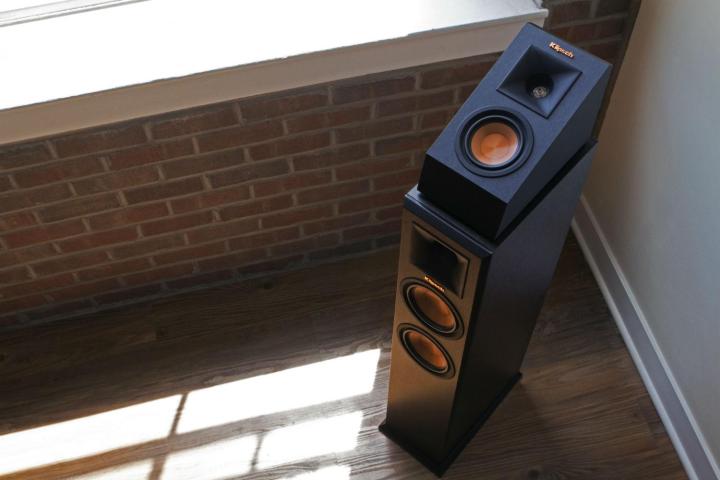
Initially, Dolby Atmos at home required the use of “height” channel speakers (the “.2” or “.4” in the middle of the speaker configuration description), but that is no longer the case. In addition to the TV speaker-based Atmos available on some TVs, you can get Dolby Atmos soundbars, which include height channels.
However, there’s also something called “virtualized” Dolby Atmos, which uses digital signal processing (DSP) to create a simulation of a 5.1.2 Dolby Atmos mix from as few as two front-facing left and right channels. How good is this virtualized effect? It varies based on the number of channels that are being virtualized and the quality of the speakers themselves. On a product like the Sonos Beam Gen 2, which virtualizes height and surround sound channels, the effect is noticeable but mild.
It can, however, be awesome. Sennheiser’s superb Ambeo Soundbar Plus possesses dedicated up-firing drivers for the height channels but uses its array of forward-facing drivers to virtualize the surround channels. It’s pricey, but it delivers a very convincing virtualized Atmos experience.
Though still not quite as good as a system with dedicated Atmos speakers, for many folks, the simplicity of a single soundbar plus a subwoofer will be worth it.
Virtualized Atmos is also showing up on new AV receivers. This means that if you have an existing 5.1, 7.1, or better surround system, but you lack height channel speakers (and don’t want to add them), the AV receiver will use your existing speakers to give you a very good approximation of the full Dolby Atmos experience.
What about headphones?
OK, so we’ve covered what you need to get Dolby Atmos sound from your TV speakers, a soundbar, or a home theater speaker system, but there’s one more option: Headphones.
It’s possible to get Dolby Atmos for both movies and music via any set of wired or wireless headphones, but you’ll need some specific equipment to make it happen.
Dolby Atmos for movies via headphones
If you have an Apple TV 4K, you can connect any set of Bluetooth headphones, and the streaming device will create a virtualized Dolby Atmos experience as long as you’re watching a movie with a Dolby Atmos soundtrack. But if you own a pair of Apple’s AirPods Pro, AirPods third-generation, or AirPods Max, the Apple TV will also enable head-tracking spatial audio — an even more immersive version of Dolby Atmos (and multichannel surround) that simulates what it’s like to listen without any headphones at all. It’s quite magical.
You can get the same experience on any mobile phone or tablet that supports Dolby Atmos.
Dolby Atmos Music via headphones
If you subscribe to Apple Music, Tidal HiFi, or Amazon Music, you can hear Dolby Atmos Music via your headphones, provided that these services have published a version of their apps that are compatible with your phone and you’ve selected a Dolby Atmos Music version of the song you want to hear. Not all songs are available in Dolby Atmos, however.
How do I know if I’m getting Dolby Atmos?

Because Dolby Atmos systems can upmix any surround sound signals they get, in order to use all of your speakers, it can sometimes be tricky to know if you’re getting true Dolby Atmos or upmixed two-channel, 5.1 or 7.1 surround sound. From an audible point of view, if you’re getting Atmos, you should be able to detect sounds as they appear to move from one area of the room to another. Rainfall, bullet ricochets, and whizzing cars are all good candidates for this.
They won’t just move from front to back or side to side; they should also occasionally sound as though they’re coming from overhead, or somewhere above the screen.
Still not certain? The one surefire way to confirm Dolby Atmos is working is to check the information panel on the front of your AV receiver or your soundbar (if it has one, or perhaps an on-screen display). It should display the kind of audio signal it’s currently working with. If the display doesn’t specifically say “Atmos” or “Dolby Atmos,” then the odds are that you’re not getting Atmos. Checking the display is likely easier than queuing up the right soundtrack for a rainfall or ricochet sound check.
Some Atmos soundbars, like the Sonos Arc, Bose Smart Soundbar 900, and LG SP9YA, will show you the audio signal within their respective mobile apps for iOS and Android.
One more thing
We have one last troubleshooting trick up our sleeves for those of you who still can’t get Atmos to appear despite exhausting all the protocols mentioned above. TVs and streaming devices have different settings for their digital audio outputs. Most of the time, they’re set to “auto” by default, which is what you want.
But sometimes, they end up in PCM (Pulse Code Modulation) mode, for whatever reason. Perhaps you have troubleshot your device every way you know how and still can’t pick up Dolby Atmos. In that case, we recommend you navigate its settings to see if it’s in PCM mode. If it’s set to PCM, change it to Auto or Bitstream. Not all setups are compatible with Dolby Atmos, so if this doesn’t work either, you might have an incompatible system.
Achieving proper Dolby Atmos requires a bit of diligence and technical know-how on your part, but it’s totally worth it. The result is a clearer, richer sound that surpasses 5.1 or 7.1 surround. We have created the diagram above to provide you with the proper guidelines to ensure that your Atmos setup goes off without a hitch. Once you dial in your files, hardware, apps, and settings, you should be able to achieve an impressive Dolby Atmos sound that’s worth all the effort.
Editors' Recommendations
- What is Dolby Vision? The dynamic HDR format fully explained
- The first Roku-made televisions are now available at Best Buy
- Sonos’ new Era 100 and Era 300 wireless speakers go all-in on spatial audio and Bluetooth
- The best noise-canceling headphones of 2023: Sony, Bowers & Wilkins, and more
- The best soundbars 2023: which should you buy?

